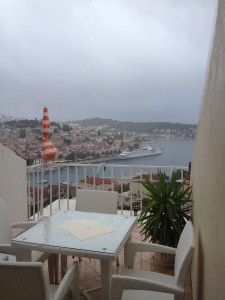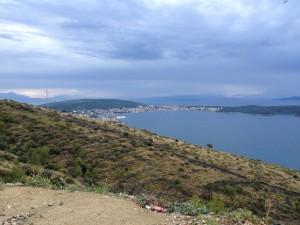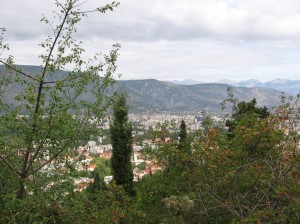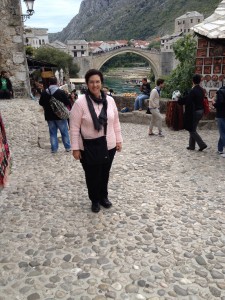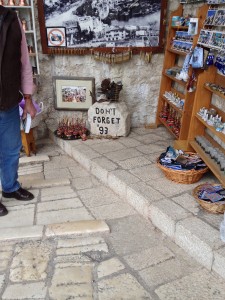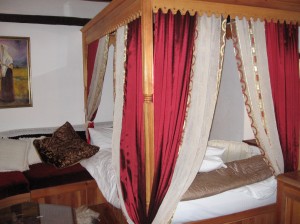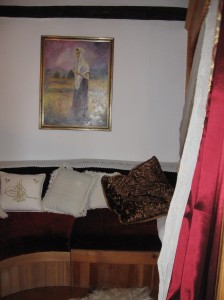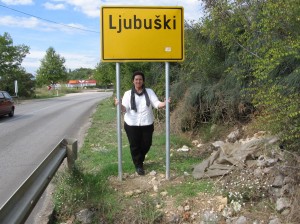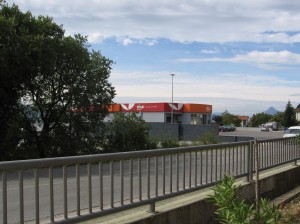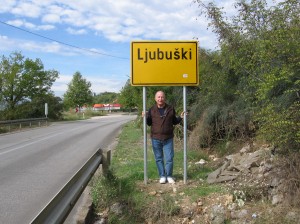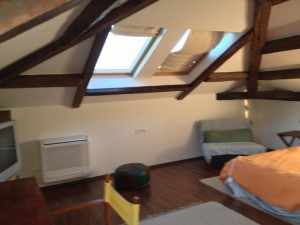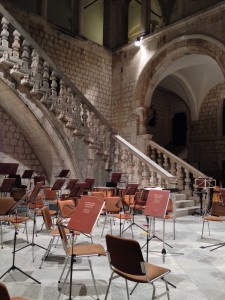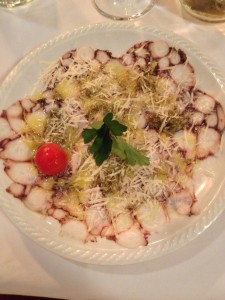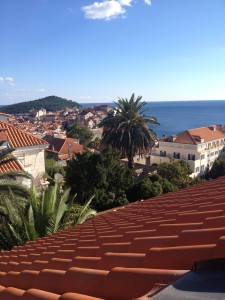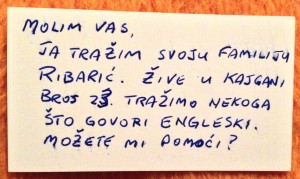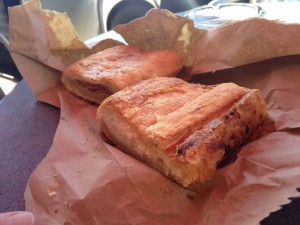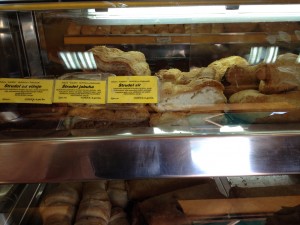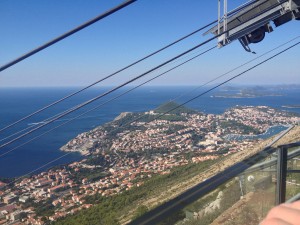Dear Mr. Garmin GPS CEO Sir, With all due respect, you really need to up your game in Bosnia and Herzegovina. It would be most helpful if you would simply indicate “unknown road condition” if you aren’t absolutely certain the road is paved, passable, and not in hostile territory. We suggest starting with the hills between Medjugorje and the Adriatic coast. Best regards, Mike and Maggie Lohnes
Rest assured, all’s well that ends well.
Good Catholics that we are, Mike and I decided we could not leave Bosnia and Herzegovina without a visit to Medjugorje. For the uninitiated, Medjugorje has been a popular pilgrimage site since the 1980s when six local children started seeing apparitions of the Virgin Mary in the local hills. This was not to be missed. To further add to the excitement, we chose a Sunday to park our little Peugeot among the tour buses and see what all the excitement was about. No one seems to have told the thousands of people in hundreds of tour buses parked at the Church of the Virgin Mary that a) the Catholic Church has not officially recognized the visions and b) the church is not where that apparitions are seen. There are many very devout people who are making the trek to Medjugorje, and they all converged on the local church. After taking in the excitement of the church crowd we realized we needed to find Apparition Hill. One of the smaller souvenir stand owners was kind enough to point it out on a map, and we got back into the car and headed into the hills. Apparently we overshot the trailhead of the path to the official site, as we notice the building density start to wane; yet another kind shop owner came out and told us to turn around on the 1-lane road. At this point Mike and I decided that we’d gotten as close as the Virgin Mary meant for us to be, having seen the actual hilltop from a distance, and decided to head to our next destination, Hvar, via Split. We left Medjugorje around 11 a.m., knowing we had plenty of time to make the 4pm ferry from Split to Hvar.
This is when the fun began – probably the Virgin Mary’s retribution for our not having made enough effort to locate Apparition Hill. We were determined to return to the Adriatic coast road, rather than an inland highway through Bosnia, for the trip to Split. As has become our habit, I entered in the name of a town along the route we wished to take, turned off the volume to ignore the incessant “Make a U-Turn” instructions, and we headed across the Bosnian hills. It seemed from the map that the road we’d originally veered off from the coast was “just over there,” but alas, long story short, we found ourselves headed down an unpaved road, passing under an enormous half-built bridge we’d recognized from our trip to Klobuk. At this point things were getting a little dicey, and we decided to turn the GPS volume back on. Our estimated arrival time at Split had just doubled, and we had no idea if we were heading closer or farther from our destination. I recall telling Mike “I think we should be hitting the border soon,” and then breathed a sigh of relief to see the border crossing ahead. I’ve never been so happy to have someone approach our car and demand to see our “documents.” After the official handed back our passports, I took the opportunity to ask “can you show us where we are?” Hearing “Metkovic, 100 kilometers ahead” gave us the orientation we needed to get us back on track. We’ve decided to stick to major Croatian roads for the rest of our journey. We made it to Split at 3:30, just in time to hand off the rental car to the agency, pick up our tickets, and hop the ferry to Hvar.
The two days we spent on the island of Hvar, followed by a night in Trogir, were blustery and wet, but that didn’t keep us from experiencing life in these historic cities with much of their original medieval construction preserved as a UNESCO historic site. We experienced quite an unusual downpour in Trogir, but fortunately the rains waited until I had climbed the bell tower for a full view of the town.
View of Hvar town from our apartment
Hvar port
View of Trogir from highway
